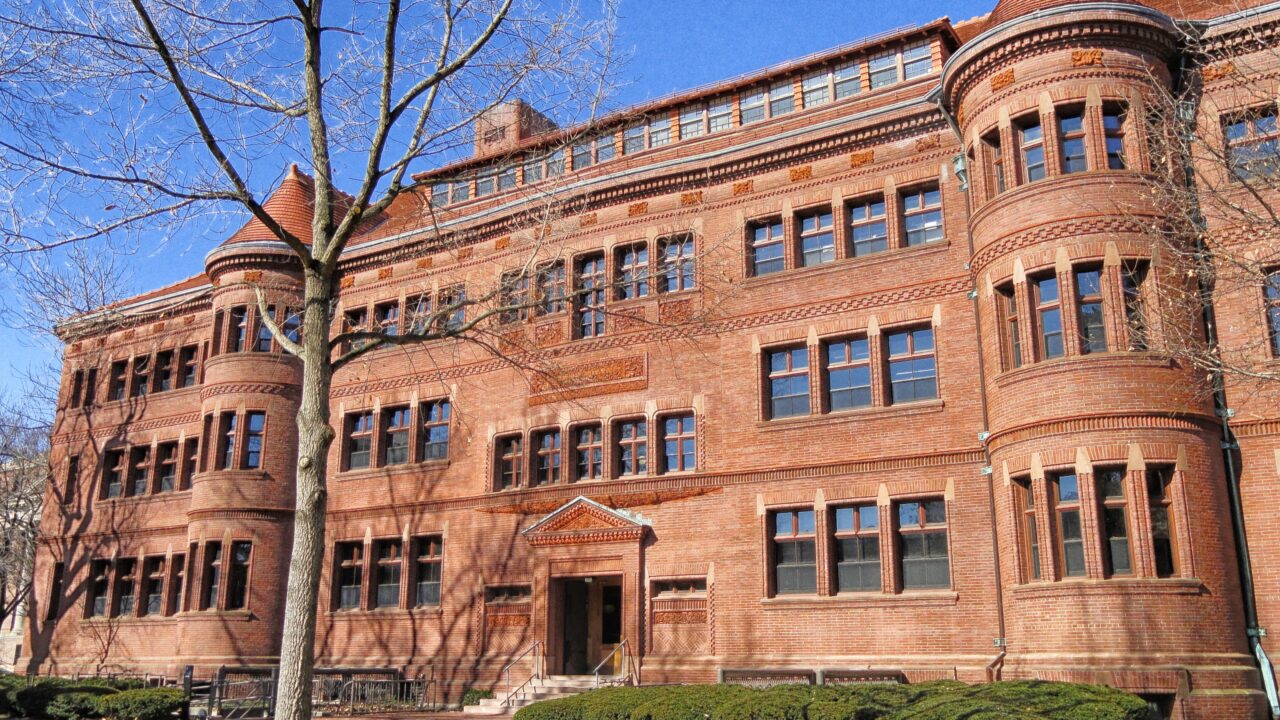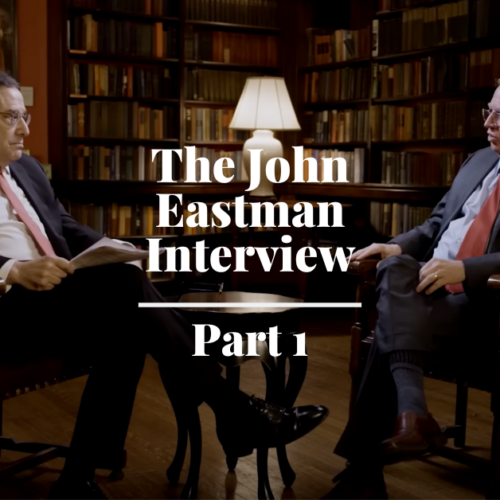The Terminally Ill Academy

What kind of a university allows mobs to govern? This question points to a further, deeper part of the ecosystem.
Editor’s Note – This essay was originally published by Law & Liberty on February 15, 2022.
Free speech is compromised and perhaps dying in plain sight. This is a familiar point, but we sometimes fail to see what lies behind the decline of free speech. A larger culture of homogeneity and suppression is flowing from the universities into American culture more broadly. Successful tyrannies in the modern world work spiritually rather than through force. They remove, as Allan Bloom wrote decades ago, “the awareness of other possibilities” and prevent “the presence of alternative thoughts.” Cramped, constrained thoughts lead to cramped, constrained discourse, and this is what we’re seeing in America today.
Nowhere is this tyranny more advanced than on college campuses. Ilana Redstone and John Villasenor, a sociologist at the University of Illinois at Urbana-Champaign and a professor of engineering at UCLA respectively, describe the tyrannical ecosystem now governing university life in their fine book Unassailable Ideas: How Unwritten Rules and Social Media Shape Discourse in American Higher Education. Their recommended solution is for universities to recommit themselves to free speech norms. They exhort professors to read more John Stuart Mill and teach diverse opinions, but our authors give too little thought to the possibility that there are not enough ears on campus to hear.
What is this tyrannical ecosystem? First, the authors outline its core content. Three beliefs, they argue, constrain the life of the mind on campus. One belief is our reigning civil rights ideology, which insists that all unequal group outcomes are traceable to discrimination. Another is the affirmation given to individual identity based on gender or race—with exceptions made, of course, for whiteness, heterosexuality, and traditional notions of masculinity and femininity. The third belief is that “anything that aims to undermine traditional frameworks is automatically deemed good.” On this, I have a quibble. Our authors frame this third belief positively, but that contradicts the idea that these beliefs constrain. It is better to emphasize that this third belief will make it difficult to defend anything traditional on campus.
Let me illustrate. Pretend a university professor argued that strong nations require strong families, and furthermore, that modern American culture undermines both in myriad ways, for instance by shaming manliness and stigmatizing male-dominated professions and majors—like engineering. That professor might also put forward a criticism of the effects of feminism on a nation’s happiness and character.
This view would run afoul of all three constraints. It would suggest that disparities between men and women in jobs and majors are at least partly traceable to different natures and preferences, not to discrimination. It would suggest that today’s construction of gender can undermine happiness both for men and for women. It would suggest that a traditional institution such as marriage has positive value, and is not merely an instrument designed by men to control women. Three strikes. Does that mean that the scholar is out?
Everyone has seen what happens when offenders question sacred opinions. No one will have your back. Non-tenured faculty will be let go. Your department will open alternate sections of your classes, taught by other people. Graduate assistants will be advised to change their research focus.
Not necessarily. Others within the university can and often will just ignore such scholarship. Enter social media, the second part of the ecosystem that our authors describe. Once social media mobs form, they show, professors and administrators turn on the heat against those expressing heterodox thoughts. The tail of the mob will wag the university dog. Academic colleagues will not do offenders the courtesy of asking for an explanation, nor will they give them the benefit of the doubt once the mob is engaged. One will hear things on campus like, “Of course we value academic freedom, but. . .” You’ll hear the sentence completed in different ways: “But such words cause harm.” “But such thoughts contradict our shared values.” “But such words reflect the heart of someone who obviously discriminates.” Academic freedom now comes with an asterisk, as our authors say. Mobs demand action; administrators and tenured academics will conform to the mob’s dictates. Our authors call this “call-out culture,” a prelude to cancellation.
The result is stultifying on research and teaching—the third part of the ecosystem. Scholars raise research questions that fit within the three core beliefs, either picking topics that are safely obscure (easier to do in the sciences), or else ensuring that their answers are safely consistent with these core beliefs. Everyone has seen what happens when offenders question sacred opinions. No one will have your back. Non-tenured faculty will be let go. Your department will open alternate sections of your classes, taught by other people. Graduate assistants will be advised to change their research focus.
Tenured faculty will also be hounded, as our authors relate. Consider the late John McAdams of Marquette, whose blogged criticisms of a graduate assistant led to a revocation of his tenure. Ask Laura Kipnis of Northwestern, whose criticisms of #metoo excesses landed her in front of Title IX tribunals on vague charges of “retribution.” Ask James Gilley of Portland State, whose peer-reviewed publication advancing a qualified defense of colonialism was pulled, with investigations initiated at his home institutions. Offending scholars may be calumnied and condemned by every academic unit on campus.
Perhaps the number of “call out” and cancellation episodes is not so numerous. Between 2016 and 2018, according to one study, there were only ninety such call-out-cum-cancellations in a country of over 300 million souls. (Of those, 60 were on campus). What’s the big deal? But our authors recognize that bean-counting is no way to judge the magnitude of the problem. A few cases are enough to scare most people away from the boundaries—they have to make a living; they want to be accepted in certain social circles; they like their jobs. Self-censorship is rampant—and it is the point of this ecosystem.
What kind of a university allows mobs to govern? This question points to a further, deeper part of the ecosystem. While occasionally our authors’ analysis has a pox-on-both-your-houses, bipartisan feel, this seems to be a calculated strategy to persuade their fellow progressives. They know that their advocacy won’t be effective if they are too closely aligned with the detested right. Nevertheless, the ideology and the mobs they describe come almost exclusively from today’s political Left. The mobs make the university more partisan, drawing American society further to the left. As our authors again acknowledge, “sociologists have described universities as a hub ‘connecting some of the most prominent institutional sectors of modern societies: the labor market and the larger economy, the professions and the sciences, the philanthropic sector, the family, and the nation-state.’” The “call-out” culture and the “cancel” culture shape American politics. Thus those who “call out” are important political actors, as are those who discipline and lie.
Our authors would not solve this problem by upsetting the universities. They suggest reforms to “cultivate open discourse” and to “foster dialogue.” Yet they seem to forget that it takes two to dialogue. They argue against mandating viewpoint diversity, which is hard to do and can backfire. True enough. As they rightly point out, starting the dialogue requires moral reform. Faculty should expose students to a diverse range of opinions, and treat them all with seriousness. Administrators and department chairs should “give greater thought to how their own communications might inadvertently narrow the range of dialog deemed permissible.” Administrators “should avoid allowing online mobs to shape decisions.” People on campus “should be more willing to tolerate uncomfortable opinions.”
This sounds nice, but also naïve given the thrust of the book. Haven’t people been hoping for a revival of free speech for decades? And haven’t things been getting worse? This solution reminds of a Henny Youngman joke. “Doc, it hurts when I do this,” and the man extends his arm. The doctor’s answer: “Then don’t do that.”
There has to be a backup plan reflecting a more realistic assessment of the problem. Any solution must alter cultural incentives. John Ellis suggests that cultural incentives will change only if the universities themselves are defunded. Such actions require a much greater change in the broader political ecosystem of which the university is a part. What salutary effects would flow from legislatures recognizing that a public university that engages in this kind of repression is not serving the public good? Universities have a systemic problem, as our authors have demonstrated. Systemic restructuring will have to come from outside, in the form of political action.
Our authors, academic liberals both, have done more than almost anyone to diagnose the mechanics of mob rule and call-out culture. They sense its depth and magnitude. Remedies must match the diagnosis, though. They are trying to kill a giant with a slingshot and a few stones. It would take a miracle for that to work.
Join the Fight
SIGN UP FOR OUR NEWSLETTER




No comments:
Post a Comment